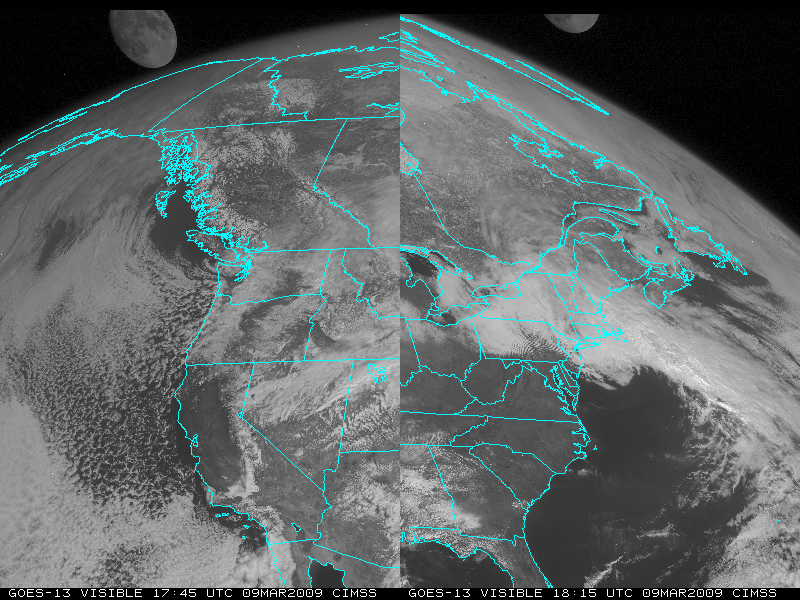The Moon on GOES-13 imagery
Several times a year the Earth’s Moon is captured on geostationary satellite imagery — but the geometry has to be exactly right in order for the Moon to be seen. A comparison of GOES-13 images (above) shows the Moon at two different times on 09 March 2009 — first at 17:45 UTC (left image panels) with an apparent location to the northwest of Alaska, and again 30 minutes later at 18:15 UTC (right image panels) with an apparent location to the northeast of Greenland.
Since much of the Moon was illuminated by the Sun, the surface exhibited a hot IR brightness temperature (around 331 K / 58º C / 157º F) as indicated by the bright yellow color enhancement on the IR images. The yellow/black striping on the IR images is due to the fact that the very hot lunar surface temperatures highlight the detector-to-detector responsivity differences. Also note that the shape of the moon was not round in the images, but somewhat “oblong” — this is due to the fact that while the Moon is moving fairly quickly across the satellite field of view, the relatively slow horizontal scanning direction of the GOES imager instrument makes the shape of the Moon appear a bit distorted.
The GOES-13 visible image of the Moon (below, courtesy of Tim Schmit, NOAA/NESDIS/STAR/ASPB) was acquired during the initial GOES-13 post-launch testing during the Summer of 2006. One of the test procedures addressed lunar calibration: the goal was to observe the Moon as soon as possible after launch of GOES-13, in order to establish a baseline for future study of GOES instrument degradation.
Here are two other examples which show the Moon on GOES-08 and GOES-12 imagery.


